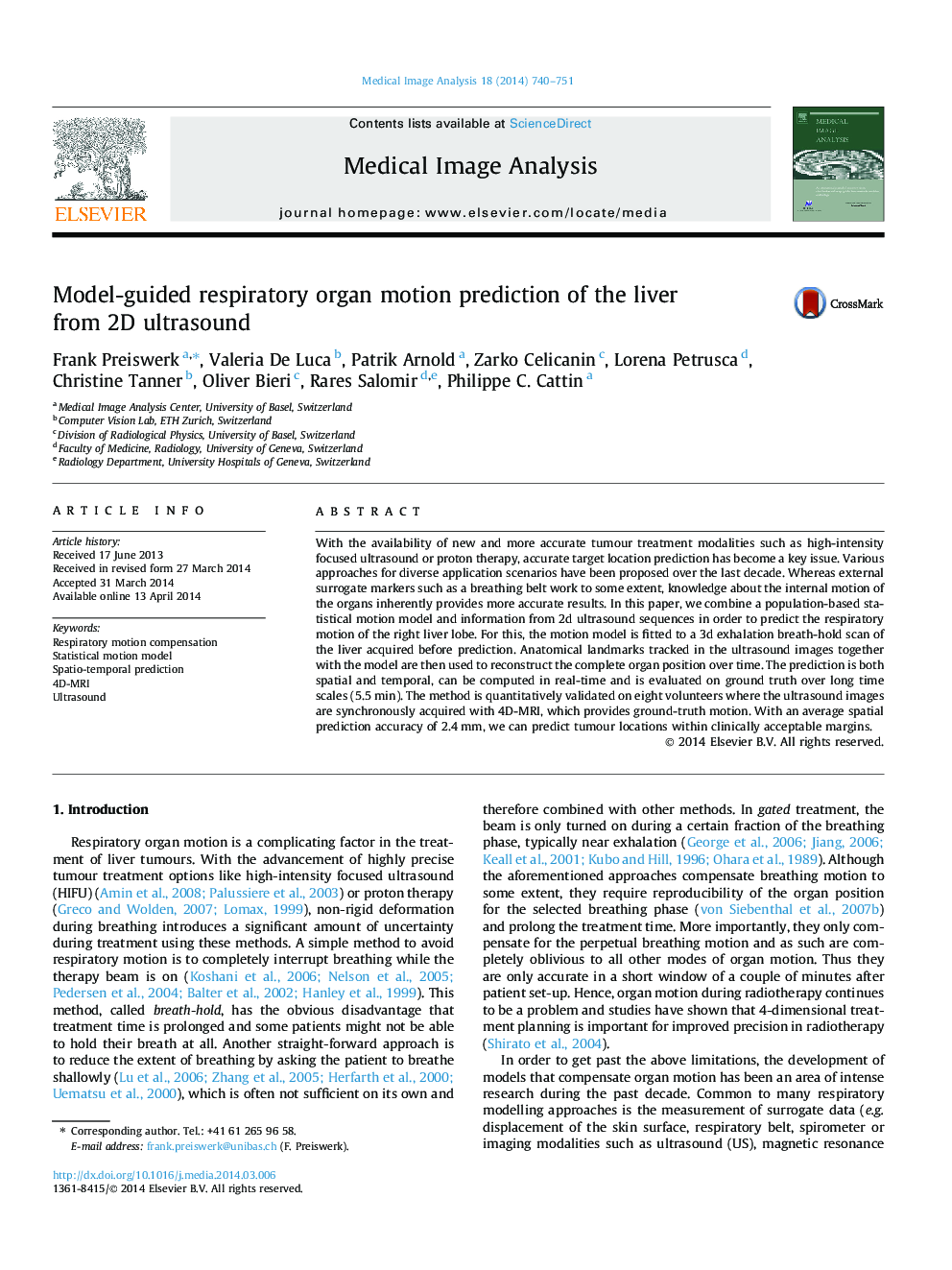| کد مقاله | کد نشریه | سال انتشار | مقاله انگلیسی | نسخه تمام متن |
|---|---|---|---|---|
| 443910 | 692810 | 2014 | 12 صفحه PDF | دانلود رایگان |

With the availability of new and more accurate tumour treatment modalities such as high-intensity focused ultrasound or proton therapy, accurate target location prediction has become a key issue. Various approaches for diverse application scenarios have been proposed over the last decade. Whereas external surrogate markers such as a breathing belt work to some extent, knowledge about the internal motion of the organs inherently provides more accurate results. In this paper, we combine a population-based statistical motion model and information from 2d ultrasound sequences in order to predict the respiratory motion of the right liver lobe. For this, the motion model is fitted to a 3d exhalation breath-hold scan of the liver acquired before prediction. Anatomical landmarks tracked in the ultrasound images together with the model are then used to reconstruct the complete organ position over time. The prediction is both spatial and temporal, can be computed in real-time and is evaluated on ground truth over long time scales (5.5 min). The method is quantitatively validated on eight volunteers where the ultrasound images are synchronously acquired with 4D-MRI, which provides ground-truth motion. With an average spatial prediction accuracy of 2.4 mm, we can predict tumour locations within clinically acceptable margins.
Figure optionsDownload high-quality image (142 K)Download as PowerPoint slideHighlights
• We predict respiratory organ motion using a statistical motion model built from 4D-MRI.
• Ultrasound is used to acquire a respiratory signal for prediction.
• For the first time, simultaneous 4D-MRI and ultrasound is acquired (for validation).
• Spatial and spatio-temporal prediction experiments are carried out.
• The study is performed on eight volunteers with an average prediction accuracy of 2.4 mm (for spatial prediction).
Journal: Medical Image Analysis - Volume 18, Issue 5, July 2014, Pages 740–751